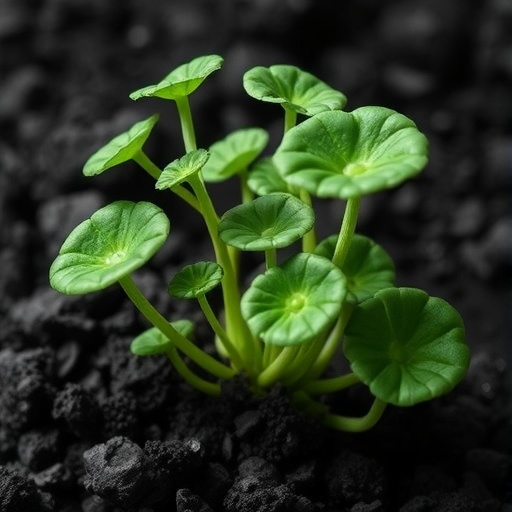In an era where sustainable agriculture is no longer a luxury but a necessity, groundbreaking research is shedding light on an innovative microbial ally capable of transforming the way we address pesticide contamination in soils. A recent study published in International Microbiology by Kumari, Ghosh, Kannan, and colleagues introduces Lactiplantibacillus plantarum, a versatile bacterium, as a promising biological agent for monocrotophos degradation alongside enhancing plant growth. This remarkable discovery bridges the gap between environmental remediation and agricultural productivity, unveiling a future where biotechnology and ecological stewardship go hand in hand.
Monocrotophos, a widely used organophosphorus insecticide, has long been under scrutiny due to its persistence in the environment and detrimental effects on both human health and ecosystems. Despite regulatory efforts, its residues frequently accumulate in agricultural soils, posing chronic toxicity risks and threatening biodiversity. Conventional remediation methods — often costly and environmentally disruptive — have struggled to mitigate monocrotophos contamination effectively. The innovative work by Kumari et al. unravels how L. plantarum could be harnessed to biologically degrade this harmful compound, marking a significant stride toward eco-friendly pesticide management.
The research rigorously investigated the metabolic capacity of L. plantarum strains isolated from various soil samples, revealing an extraordinary enzymatic machinery adept at breaking down monocrotophos molecules. Unlike traditional chemical degradation, this microbial process leverages naturally occurring biochemical pathways, transforming toxic pesticides into harmless metabolites that integrate back into soil organic matter. This biodegradation not only mitigates pollution but also restores soil health, a critical factor for sustainable crop production.
.adsslot_r9nTXBED68{ width:728px !important; height:90px !important; }
@media (max-width:1199px) { .adsslot_r9nTXBED68{ width:468px !important; height:60px !important; } }
@media (max-width:767px) { .adsslot_r9nTXBED68{ width:320px !important; height:50px !important; } }
ADVERTISEMENT
Diving deeper into the microbial interactions, the study highlights the dual functionality of L. plantarum. Beyond pesticide degradation, this bacterium promotes plant growth through mechanisms such as nitrogen fixation, phosphate solubilization, and secretion of growth-enhancing phytohormones like indole-3-acetic acid (IAA). This synergy translates into robust root development, improved nutrient uptake, and increased resilience against biotic and abiotic stresses. Essentially, L. plantarum emerges as a biofertilizer and bioremediator rolled into one, creating a holistic approach toward greener farming practices.
The molecular underpinnings of monocrotophos degradation were elucidated by sequencing the bacterium’s genome and identifying key genes encoding hydrolases and esterases instrumental in pesticide breakdown. This genetic insight paves the way for targeted bioengineering efforts to optimize L. plantarum strains for accelerated or broader-spectrum bioremediation applications. Synthetic biology could further enhance these traits, producing designer microbes tailored to specific environmental challenges.
Environmental sustainability emerges as the core advantage of leveraging L. plantarum in agricultural settings. Unlike chemical remediation strategies that may cause secondary pollution or soil degradation, the use of this bacterium aligns with circular economy principles, recycling pesticide residues into soil nutrients and fostering biodiversity. By integrating microbial technologies into conventional farming systems, a balance can be struck between agrochemical use and environmental stewardship.
The broader implications of this research extend to global food security and public health. Monocrotophos contamination affects not only crop yields but also food safety due to toxin bioaccumulation. Application of L. plantarum-based bioremediation could reduce pesticide residues in food supplies, lowering exposure risks for consumers. Particularly in low- and middle-income countries where pesticide regulations are lax or enforcement weak, microbial solutions offer cost-effective means to tackle contamination and improve health outcomes.
This scientific breakthrough also resonates within the expanding field of sustainable biotechnology, inspiring new research avenues exploring microbial consortia that can simultaneously degrade various pesticides and promote plant growth. Synergistic interactions between bacteria like L. plantarum and fungi or other beneficial microbes could amplify remediation efficiencies, pointing toward integrated microbial formulations for widespread agricultural deployment.
Despite the promising results, the authors emphasize the need for long-term field trials to fully understand ecological impacts, microbial persistence, and crop responses under diverse environmental conditions. Such studies will be critical to ensuring that L. plantarum applications do not disrupt native soil microbiomes or foster unintended consequences. Regulatory frameworks supporting microbial inoculants must also evolve to foster safe and effective biotechnological innovations in agriculture.
Industry stakeholders and policymakers stand to benefit immensely from this research, gaining a powerful tool to meet sustainability targets and comply with increasingly stringent pesticide regulations. Adoption of L. plantarum-based formulations could reduce dependency on synthetic agrochemicals, lower remediation costs, and contribute to carbon footprint reduction by enhancing soil carbon sequestration through improved organic matter cycles.
Intriguingly, this study also invites a paradigm shift in how we perceive soil bacteria — not as passive inhabitants but as dynamic agents capable of transforming agroecosystems through targeted biochemical functions. Harnessing such microbial power requires interdisciplinary collaborations spanning microbiology, agronomy, environmental science, and bioengineering to translate laboratory insights into real-world solutions.
As climate change and environmental degradation intensify pressures on agricultural systems worldwide, innovations like the deployment of Lactiplantibacillus plantarum stand as beacons of hope. They underscore the potential of nature’s own microscopic workforce to reverse pollution trends and foster resilient, productive landscapes. This research champions a future where microbial allies help secure nutrition, health, and ecosystem integrity for generations to come.
In conclusion, the introduction of L. plantarum as a microbial weapon against monocrotophos contamination marks a milestone in sustainable agriculture and environmental remediation. It exemplifies how harnessing microbial diversity and function can address intertwined challenges of pollution and food security synergistically. With further development and adoption, this approach could redefine modern farming, providing greener, safer, and more resilient agricultural systems across the globe.
Subject of Research: Microbial degradation of monocrotophos pesticide and enhancement of plant growth using Lactiplantibacillus plantarum.
Article Title: Lactiplantibacillus plantarum as a sustainable solution for monocrotophos degradation and plant growth enhancement.
Article References:
Kumari, A., Ghosh, C., Kannan, N. et al. Lactiplantibacillus plantarum as a sustainable solution for monocrotophos degradation and plant growth enhancement. Int Microbiol (2025). https://doi.org/10.1007/s10123-025-00671-6
Image Credits: AI Generated
DOI: https://doi.org/10.1007/s10123-025-00671-6
Tags: agricultural productivity improvementbiological pest managementeco-friendly pesticide alternativesecological stewardship in farmingenvironmental biotechnology applicationsLactiplantibacillus plantarummicrobial agents for agriculturemonocrotophos degradationorganophosphorus insecticidesplant growth enhancementsoil contamination remediationsustainable agriculture solutions





